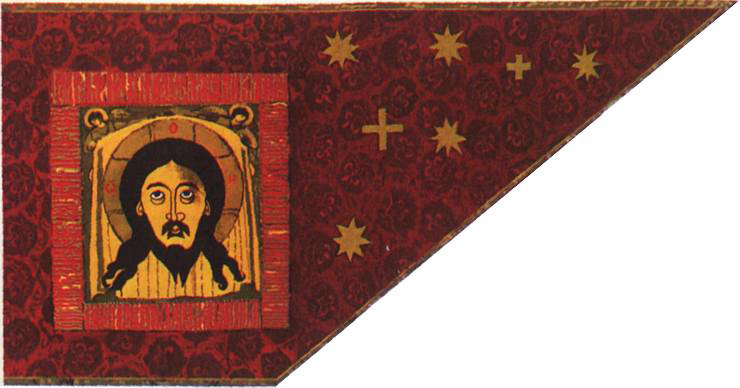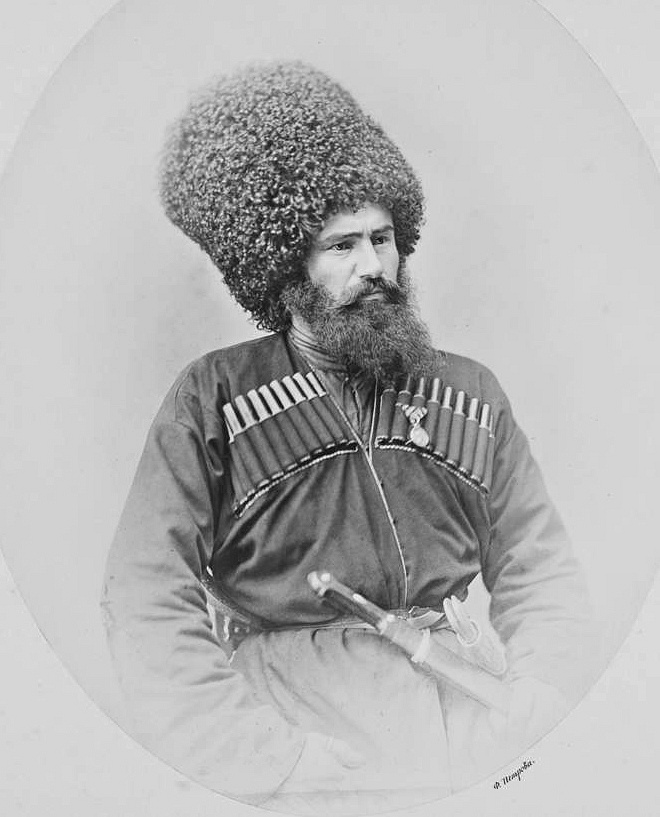|
Flag Of The Republic Of Dagestan
The flag of the Republic of Dagestan (russian: Флаг Дагестана; av, Дагъистаналъул байрахъ; az, Дағыстан бајрағы, Dağıstan bayrağı, italics=no; kum, Дагъыстаны байракъ) was adopted after the transformation of the Dagestan ASSR into the Republic of Dagestan within the Russian Federation. The flag was formally adopted on 26 February 1994. It features a horizontal tricolor of green (for Islam),''The World Encyclopedia of Flags'', Alfred Znamierowski (pub. Hermes House, 2002), p. 160 blue (for the Caspian Sea), and red (for courage and fidelity). On 19 November 2003 the proportion of the flag was changed from the original 1:2 to 2:3, and the middle stripe from light blue to blue. Colours scheme The official colours scheme was declared in 19 November 2003. Historical flags Following its formation from parts of the Mountainous Republic of the Northern Caucasus in 1921, the Dagestan Autonomous Soviet Soci ... [...More Info...] [...Related Items...] OR: [Wikipedia] [Google] [Baidu] |
Tricolour (flag)
A tricolour () or tricolor () is a type of flag or banner design with a triband design which originated in the 16th century as a symbol of republicanism, liberty, or revolution. The flags of France, Italy, Romania, Mexico, and Ireland were all first adopted with the formation of an independent republic in the period of the French Revolution to the Revolutions of 1848, with the exception of the Irish tricolour, which dates from 1848 but was not popularised until the Easter Rising in 1916 and adopted in 1919. History The first association of the tricolour with republicanism is the orange-white-blue design of the Prince's Flag (''Prinsenvlag'', predecessor of the flags of the Netherlands), used from 1579 by William I of Orange-Nassau in the Eighty Years' War, establishing the independence of the Dutch Republic from the Spanish Empire. The flag of the Netherlands inspired both the French and Russian flags, which in turn inspired many further tricolour flags in other countrie ... [...More Info...] [...Related Items...] OR: [Wikipedia] [Google] [Baidu] |
Dagestan ASSR
The Dagestan Autonomous Soviet Socialist Republic av, Дагъистаналъул Автономияб Советияб Социалистияб Жумгьурият az, Дағыстан Мухтар Совет Сосиалист Республикасы kum, Дагъыстан Автономиялы Советни Социалистни Республика (1921–1991), abbreviated as Dagestan ASSR; av, Дагъистаналъул АССР; kum, Дагъыстан АССР; lez, Дагъустандин АССР; lbe, Дагъусттаннал АССР; az, Дағыстан МССР, italics=no; Aghul: Дагъустан АССР; ce, ДегӀастанан АССР; nog, Дагыстан АССР or DASSR and also unofficially known as Soviet Dagestan or just simply Dagestan, was an autonomous republic of the Russian SFSR within the Soviet Union. This "Land of Mountains" was known also for having a "mountain of peoples," with more than thirty ethnic groups indigenous to th ... [...More Info...] [...Related Items...] OR: [Wikipedia] [Google] [Baidu] |
Flags Of The Federal Subjects Of Russia ...
This gallery of flags of federal subjects of Russia shows the flags of the 89 federal subjects of Russia. Current federal subject flags 24 Republics 9 Krais 48 Oblasts 3 Federal cities 1 Autonomous oblast 4 Autonomous okrugs Historical federal subject flags Former flags of current federal subjects Obsolete federal subjects Notes See also * Armorial of Russia *Flag of Russia *List of Russian flags *Flags of the Soviet Republics *List of Sakha flags {{Lists of Russian federal subjects Flags of country subdivisions Lists of flags of Russia Flags A flag is a piece of textile, fabric (most often rectangular or quadrilateral) with a distinctive design and colours. It is used as a symbol, a signalling device, or for decoration. The term ''flag'' is also used to refer to the graphic desi ... [...More Info...] [...Related Items...] OR: [Wikipedia] [Google] [Baidu] |
Culture Of Dagestan
Dagestan ( ; rus, Дагеста́н, , dəɡʲɪˈstan, links=yes), officially the Republic of Dagestan (russian: Респу́блика Дагеста́н, Respúblika Dagestán, links=no), is a republic of Russia situated in the North Caucasus of Eastern Europe, along the Caspian Sea. It is located north of the Greater Caucasus, and is a part of the North Caucasian Federal District. The republic is the southernmost tip of Russia, sharing land borders with the countries of Azerbaijan and Georgia to the south and southwest, the Russian republics of Chechnya and Kalmykia to the west and north, and with Stavropol Krai to the northwest. Makhachkala is the republic's capital and largest city; other major cities are Derbent, Kizlyar, Izberbash, Kaspiysk and Buynaksk. Dagestan covers an area of , with a population of over 3.1 million, consisting of over 30 ethnic groups and 81 nationalities. With 14 official languages, and 12 ethnic groups each constituting more than 1% of i ... [...More Info...] [...Related Items...] OR: [Wikipedia] [Google] [Baidu] |
Coat Of Arms Of Dagestan
The coat of arms of Dagestan was instituted on 20 October 1994. The eagle is a traditional symbol of nobility, courage, wisdom, and faith. References Sources * ''Dagestan'': Edward Beliaev, Oksana Buranbaeva. Cavendish State Publishing 2005(Google Books) Russian coats of arms, Dagestan Coats of arms with hands, Dagestan Coats of arms with eagles, Dagestan Coats of arms with suns, Dagestan Coats of arms with mountains, Dagestan {{Heraldry-stub ... [...More Info...] [...Related Items...] OR: [Wikipedia] [Google] [Baidu] |
Flag Of Russia
The national flag of Russia (russian: Флаг России, Flag Rossii), also known as the ''State Flag of the Russian Federation'' (russian: Государственный флаг Российской Федерации, Gosudarstvenny flag Rossiyskoy Federatsii), is a tricolour (flag), tricolour flag consisting of three equal horizontal fields: white on the top, blue in the middle, and red on the bottom. The flag was first used as an ensign for Russian merchant ships in 1696. It remained in use until 1858, when the first official flag of the Russian Empire was decreed by Alexander II of Russia, Alexander II, which was a tricolour consisting of three horizontal fields: black on the top, yellow in the middle, and white on the bottom. A decree in 1896 reinstated the white, blue, and red tricolour as the official flag of the Russian Empire until the Revolution of 1917. Following the creation of the Russian Socialist Federative Soviet Republic after the October Revolution, Bo ... [...More Info...] [...Related Items...] OR: [Wikipedia] [Google] [Baidu] |
Tabasaran People
Tabasarans are a Northeast Caucasian ethnic group native predominantly to southern part of the North Caucasian Republic of Dagestan. Their population in Russia is about 150,000. They speak the Tabasaran language. They are mainly Sunni Muslims. History The earliest mention of the Tabasarans are found in 7th century Armenian sources referring to them as an independent people of Dagestan. Arab historians referred to their land as "Tabarstan". In the 8th century, the Arabs conquered parts of the Caucasus including the territory of the Tabarsarans. In the 15th century, the Tabasrans formed a powerful principality called the Maisumat of Tabarsaran. However, the state was eventually divided into two due to internal struggles and both were conquered by the Russians in the early 19th century. Culture Language The main language of the Tabasaran people is the Tabasaran language (табасаран чIал, ''tabasaran ҫ̇al''), which belongs to the Lezgic branch of Northeast ... [...More Info...] [...Related Items...] OR: [Wikipedia] [Google] [Baidu] |
Rutul People
Rutuls, Rutulians ( rut, Мыхабыр, Mykhabyr) are a Northeast Caucasian ethnic group native to Dagestan and adjacent parts of Azerbaijan. According to the 2010 Russian Census, there were 35,240 Rutuls in Russia. In 1989 Soviet Census in Azerbaijan (Azerbaijan SSR then) there were 336 Rutuls. The Rutul language is a member of the Northeast Caucasian language family; its speakers often have a good command of Azeri and Russian, as Rutul was not a written language until 1990. The Rutul culture is close to that of the Tsakhur and other peoples who inhabit the basin of the upper reaches of the Samur River. Most of the Rutuls are engaged in cattle breeding (mostly sheep husbandry), farming, and gardening. Religion The Rutuls adhere to Sunni Islam. The earliest attempts of Arabs to affirm as Dagestan concern the 7th century, and in Rutul's territory they made the greatest success. The earliest monument of Muslim culture testifies to it on caucasus - a tombstone of Sheikh Mago ... [...More Info...] [...Related Items...] OR: [Wikipedia] [Google] [Baidu] |
Lezgin People
Lezgins or Leks ( lez, Лезгияр, Лекьер. lezgijar) are a Northeast Caucasian ethnic group native predominantly to southern Dagestan, a republic of Russia, and northeastern Azerbaijan. The Lezgin are predominantly Sunni Muslims and speak the Lezgi language. The land of the Lezgins has been subject to multiple invaders throughout history. Its isolated terrain and the strategic value outsiders have placed on the areas settled by Lezgins has contributed much to the Lezgin community ethos and helped shape its national character. Due to constant attacks from the invaders, the Lezgins have developed a national code, ''Lezgiwal''. Lezgin society has traditionally been egalitarian and organized around many autonomous local clans, called ''syhils'' (сихилар). Notable historical Lezgin leaders include Hadji-Dawud (1680 – 1735) and Sheikh Muhammad (1771–1838). Etymology There is a strong theme of representing the nation with its national animal, the eagle, and te ... [...More Info...] [...Related Items...] OR: [Wikipedia] [Google] [Baidu] |
Nogai People
The Nogais ( Nogai: Ногай, , Ногайлар, ) are a Turkic ethnic group who live in the North Caucasus region. Most are found in Northern Dagestan and Stavropol Krai, as well as in Karachay-Cherkessia and Astrakhan Oblast; some also live in Chechnya, Dobruja (Romania and Bulgaria), Turkey, Kazakhstan, Uzbekistan, Ukraine and a small Nogai diaspora is found in Jordan. They speak the Nogai language and are descendants of various Mongolic and Turkic tribes who formed the Nogai Horde. There are seven main groups of Nogais: the Ak Nogai, the Karagash, the Kuban-Nogai, the Kundraw-Nogai, the Qara-Nogai, the Utars and the Yurt-Nogai. Name For a long time it was believed that their namesake founder was Nogai Khan ( 'dog' in Mongolian), a grandson of Jochi. Nogai (d. 1299–1300) was the de facto ruler, kingmaker, and briefly self-proclaimed khan of the Golden Horde. Geographic distribution In the 1990s, 65,000 were still living in the Northern Caucasus, divided into Aq ... [...More Info...] [...Related Items...] OR: [Wikipedia] [Google] [Baidu] |
Lak People (Dagestan)
The Laks (self-designation: Lak) are a Northeast Caucasian ethnic group native to an inland region known as ''Lakia'' within Dagestan in the North Caucasus. They speak the Lak language. Laks historically live in the Lakskiy and Kulinskiy districts of Dagestan. This ethnocultural area is known as Lakia. There are about 200,000 ethnic Laks in the world. Ethnonym The word "Lak" is the self-designation of the Lak people as in Lak expressions: "zhu Lak buru" — we are Lak; "zhu Lakral khalq buru" — we are Lak people; "Laktal" — Laks; "Lakssa" — Lakian, Laks, Lak man; "Lakkuchu" — Lakian man; "Lakku maz" — Lakian language; "Lakkuy" — Lakia; "Lakral kanu" — Lak place; "Lakral kanu" — Lak district; "Lakku bilayat" — Lak country; "Lakral pachchahlug" — Lak state. Laks use the name "Lak" as their ethnonym and placename. P. K. Uslar (1864) reported on the use of self-designation "Lak" by residents of Gazi-Kumukh: "Lakkuchu, Lakkuchunal, nominative plural Lak, geni ... [...More Info...] [...Related Items...] OR: [Wikipedia] [Google] [Baidu] |
Kumyk People
, image = Abdul-Wahab son of Mustafa — a prominent Kumyk architect of the 19th century. , population = near 600,000 , region1 = , pop1 = 503,060 , ref1 = , region2 = , pop2 = 10,000 , ref2 = , region3 = , pop3 = 718 , ref3 = , langs = Kumyk language , region4 = , pop4 = 1200 , ref4 = , region5 = , pop5 = 481 , ref5 = , region6 = , pop6 = 360 , ref6 = , region7 = , pop7 = 33 , ref7 = [...More Info...] [...Related Items...] OR: [Wikipedia] [Google] [Baidu] |





